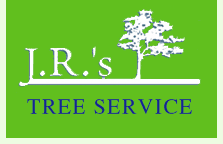In a rapidly warming environment, trees and shrubs are more critical than ever; Trees have so many positive environmental attributes. Trees provide shade where there is alot of concrete and asphalt to heat up some streets. Trees naturally also provide oxygen and clean air.
In Brooklyn, the surroundings are mainly covered with asphalt and concrete, but Brooklyn is also abundant with trees. Being in the borough, you might be curious to the most common trees in Brooklyn.
Here are the Top 5 trees growing in Brooklyn, New York and how to care for them
London Planetree
How to care for London Planetree

The full sun is perfect for the London planetree, but it will endure partial shade. It needs a minimum of four hours of immediate sunlight each day, but six hours or even more is better. The tree does best in rich, deep, well-draining soil. The tree features medium to high water needs, based on how much heat and sun it gets. If left unpruned, the London planetree will expand very large. Generally speaking, it’s advised to prune unhealthy, dying, and dead branches during the winter.
Best time to plant a London Planetree in Brooklyn
Anytime you want to plant a tree in Brooklyn – doing it in the spring and after the last frost. The ground has to be entirely thawed for roots to flourish. In the fall is a perfect time to plan for future planting trees.
Norway Maple

Norway maple is a large deciduous tree that may grow up to approximately 40-60 feet tall. This attractive plant is native to Europe and western Asia and has grown to be naturalized in some regions of North America. They are tolerant of several different growing settings and are actually a famous tree to plant on lawns and along roads due to their hardiness.
How to care for Norway Maple Trees
Among the highlights of Norway Maple tree care is controlling the samaras, or seed fruits. The fruits can catch the wind and get around far away from the main tree. They germinate easily and can become a problem in rural settings or close to local woods. Pruning the Norway Maple at the end of the season, just before the samaras turn brown, can reduce wild seedlings from being a pest. Other control is restricted to supplemental watering throughout hot summers, once a year fertilizing with a well balanced food in early springtime, and eliminating any destroyed or unhealthy wood. These trees, if properly managed, can quickly develop into desirable focal points of the shade garden.
Honeylocust

Honeylocust makes an ideal deciduous tree in a yard that does not want hefty shade. The little green leaflets and open branch framework allow sufficient light that will penetrate to the ground allowing lawn grass to develop. Some picks start with light yellow-colored leaves that turn green and then yellow again throughout fall. Honeylocust is tolerant of urban conditions, such as air pollution and salt spray, so makes an
On the other hand, older selections generate brown seedpods, which drop in fall and may become unpleasant. They also might have thorns that can be dangerous any time you’re working around the tree. More recent types that mostly dominate the market do not produce possible seeds or thorns.
How you can care for Honeylocust Tree
Trees need to be watered the moment they are planted, and every week for the first year. Prune honeylocusts on a 5- to 6-year period, beginning when they are young. Prune in spring to get rid of little shoots along the trunk, suckers, water sprouts, and competing twigs. Prune out dead, diseased, or broken twigs any time. Honeylocust trees may have a variety of insects and diseases attacking them. The most abundant are spider mites, gall midges, and webworms. Manage these with all-natural sprays and by keeping the trees non-stressed. Select newer types that don’t have frustrating thorns.
Pin Oak

Pin oak is really a fast-growing, large maturing shade tree which has a satisfying oval-pyramidal shape. Leaves are a deeply lobed, glossy darkish green during the summer. Fall color is highly varying, which range from red to brown. Throughout the dormant season, the distinctive fine thick branch structure is visible
How to care for Pin Oak Trees in Brooklyn
Growth of pin oak is best throughout areas of full sun. Trees growing in the shade are slow to fully developed and often die prematurely. Pin oak will undoubtedly grow in most varieties of acidic soils, and it is known for its tolerance to hefty clay soil. Flooding during the winter season and early spring is easily tolerated. Soils that are saturated over a few weeks during the growing period may be harmful to tree growth. To enhance overall tree health, proper mulching, pest managing, fertilization, and irrigation are needed.
Callery Pear

Callery pear grows best in a wide variety of conditions and grows rapidly, frequently attaining heights of between 12-15 feet (3. 7-4. 6 m. ) within an 8- to 10-year time period. In the spring, the tree is a view to behold with colors from red, yellow to white.
How to care for Callery Pear Trees in Brooklyn
Because of their strong, upright growth, Callery Pear may have narrow crotch aspects and split easily throughout high winds, ice, or even snowstorms. This can easily deform a tree beyond restoration. Callery Pear doesn’t have any kind of major pest or disease problems. Get rid of dead, unhealthy, and broken branches any time and prune after blooming in spring to remove suckers, water sprouts, and populated growth in the center of the tree.
